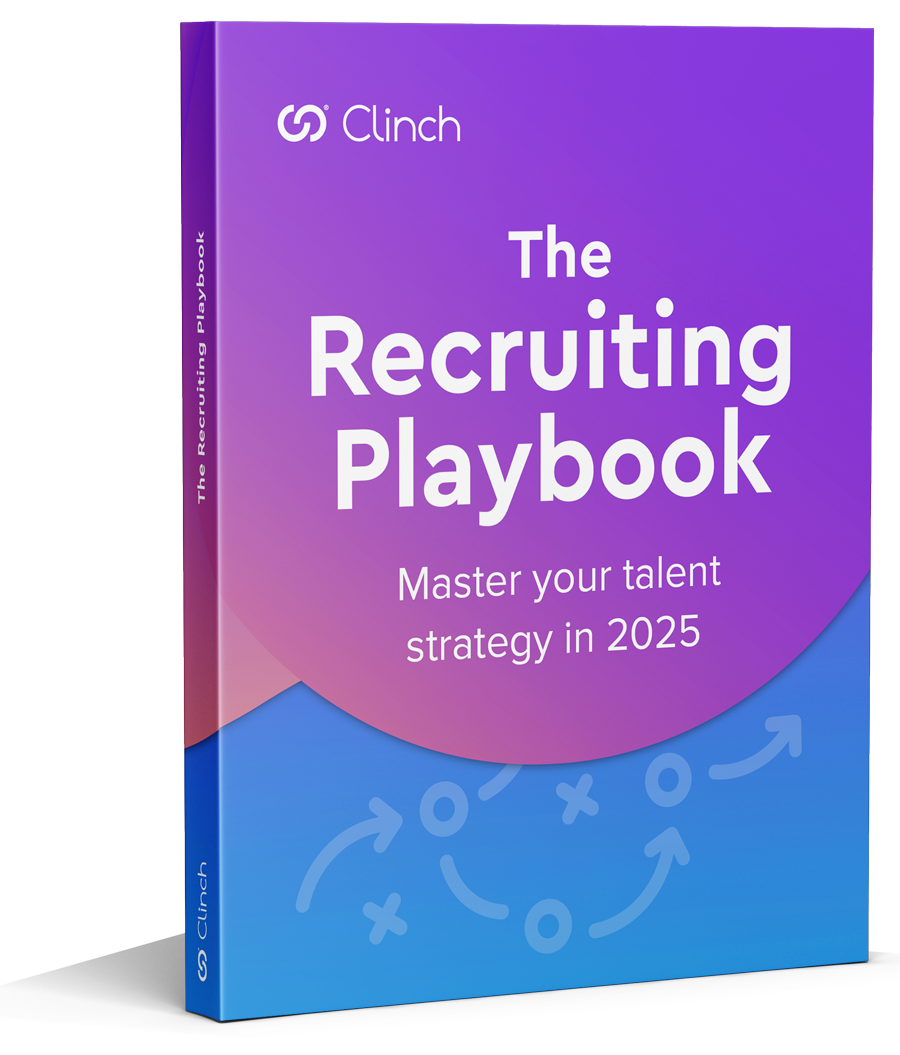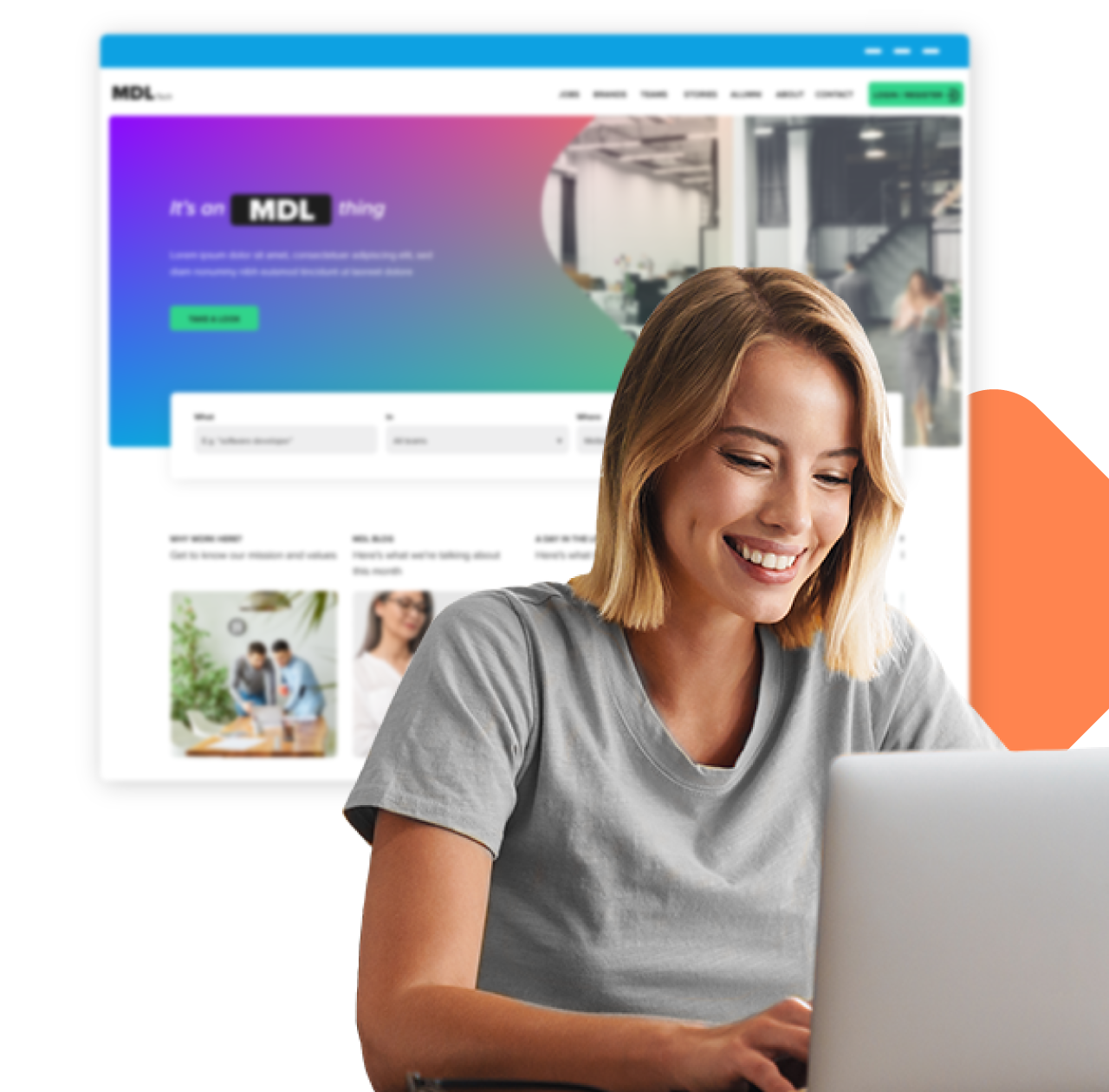How are hiring teams building robust candidate pipelines in today’s ever-changing recruiting landscape? Clinch and Talent Board collaborated on a recent report to understand how talent teams are tackling recruitment challenges. What proactive tactics can your business use to engage top-tier talent and encourage them to hit apply?
Based on the report findings, we identified five recruiting tactics you may be overlooking that can positively impact your recruitment success.
1. Employee referrals
Employee referrals are extremely reliable lead sources for talent teams —cited as the number one talent attraction tactic (61%) in the TA Team research report. Of those who do not already leverage referrals, 32% plan on adding them in the next year.
Once those referrals come through, it’s important to have an engaging career site to deliver a personalized, engaging and authentic candidate experience. Clinch customers attract more of the right candidates by leveraging automated and personalized candidate touchpoints. Based on visitor cookie history, Clinch can serve up content and job recommendations catered to their location and interests.
For example, take a jobseeker who had previously searched for engineering roles. Clinch career sites will show relevant content —such as engineering openings or ‘Developer’ employee profiles. Clinch can also serve up employee-generated content [EGC] for relevant fields —like day-in-the-life videos filmed by engineers. This EGC can be created for any open role, giving candidates a better insight during the pre-application phase.
Rather than a wall of text describing a laundry list of role requirements, employee-generated videos, photos and testimonials bring the job description to life. This type of authentic, engaging content shows jobseekers why they should want to work there. The result is not just more applicants, but better applicants: ones that truly understand the culture, vision and requirements of the role.
2. Employer branding
Employer branding was ranked as a challenge among 22% of respondents. This makes sense, as this crucial component of the hiring process is often the fringe responsibility of two departments (Marketing & HR or TA) which leads to competing priorities. But taking steps to articulate and improve your employer brand can make you an employer of choice.
Employer brand isn’t just how your career site looks. It includes every touchpoint a candidate has with your organization —from the diversity present in your content, to the ease of application forms and the transparency of your communication on all channels. With 86% of passive candidates evaluating a brand before applying for a job, it’s of immense importance.
Your employer brand is ultimately your reputation in the market. The more you can articulate and deliver what today’s candidates are looking for, the better.
- Day-to-day role responsibilities and priorities
- Commitment to flexible work environments
- Growth and development opportunities (both linear and lateral)
In light of this information, ask yourself: Is your employee value proposition (EVP) clear, concise, and accessible on your career site? Can you demonstrate how your organization appeals to what candidates want most right now? If you can, jobseekers will be more inclined to take a positive view of your employer brand.
While survey respondents found employer branding a challenge, 44% are still utilizing it and consider it one of their top talent attraction tactics, with another 26% prioritizing it in the next 12 months.
You’ll want to consider and consult current employees when honing your employer brand. They should be aligned with your brand so that they can share their positive experiences when interacting with candidates. A powerful way to increase employee satisfaction in your talent team is by optimizing your career site to be easier to manage and edit on a daily basis.
3. Recruitment marketing campaigns
Recruitment marketing campaigns are among the top talent engagement and attraction activities for 37% of survey respondents. These campaigns include a range of marketing activities geared towards a specific role, department, or pipeline of candidates such as alumni, referrals, or silver medalists. The trick to a successful recruitment marketing campaign in the current age of talent attraction is to have multiple channels working at once —emails, social media, targeted ads, virtual events, webinars, podcast episodes, and automated campaign workflows.
Clinch customers can easily encourage jobseekers to opt in to their talent network through automated prompts, calls to action, and information capture forms. Once the candidate information is collected, pre-set campaign workflows automatically nurture hot prospects and alert potential applicants when a suitable role arises.
Diversifying candidate touchpoints is key to recruitment marketing campaign success —as is targeted, personalized and authentic communications. The goal is to build a lasting relationship with the candidate until the right role comes up.
Using a recruitment marketing platform to streamline your communication approach can increase the efficacy of the campaign by 24%, and allow you to track activities from all angles —so you can see what’s working, and what’s not.
Remember what we detailed above on what matters most to candidates: it’s important your messaging includes content that is relevant and interesting to this cohort. An engaged jobseeker is one that is likely to apply for a role.
4. Employee generated content and live Q&A sessions
Over the past few years, employers realized they need to stay a steap ahead of their competitors if they want to attract and retain outstanding talent. Innovation is key to gain the upper hand in hiring, and leading organizations are always looking for new, authentic ways for candidates and companies to interact. Employee generated content (EGC) provides an avenue for existing employees to connect directly with jobseekers — giving career site visitors a chance to gain a true insight into company culture.
This should include giving candidates access to live recruiter Q&A sessions, live chat with employees, pre-recorded video responses from employees, and more. These channels, while still growing in popularity (with 14-15% adoption rate among respondents), allow candidates the chance to ask specific questions about the role and company.
- interview tips
- career advice
- day-to-day employee life
- company info
- company benefits
- internal career mobility
- career progression
- events
- diversity
- job description
- culture
- work-life balance
- salary
Candidates crave authenticity, so employees should be encouraged to provide first-hand testimonials that paint an accurate picture of life at an organization. Today’s candidates have many options, and they want to sign on with an employer who will give them the full picture.
Survey respondents found that when using employee generated content technology as part of their hiring strategy, the number of recruiters who were “very satisfied” about the quality of candidates increased to 27%. Hiring managers’ satisfaction rose even higher at 37%.
5. Internal mobility campaigns
When a role becomes available, it should be a common procedure for employees to be notified first, in order to encourage a culture of internal mobility. This lets employees know they are top of mind when it comes to growth opportunities and also increases retention. If you don’t maximize the potential of your workforce, another employer gladly will!
Of course, implementing this process can be challenging, and many companies overlook internal mobility as part of their strategy. Concerningly, only 13% of survey respondents are actively pursuing internal mobility campaigns, despite internal channels being considered the number one attraction/sourcing activity (86%) driving higher levels of satisfaction among TA teams.
One of the main reasons workers left their jobs in droves during The Great Resignation, as found by Pew Research Center and Wharton, was because advancement and professional development opportunities were lacking at their place of employment. And while it’s a move in the right direction for the 36% of respondents who leverage internal databases to fill roles, without a formal internal mobility program to promote self-selected upward and lateral movement at your organization, employers will still be missing the mark.




